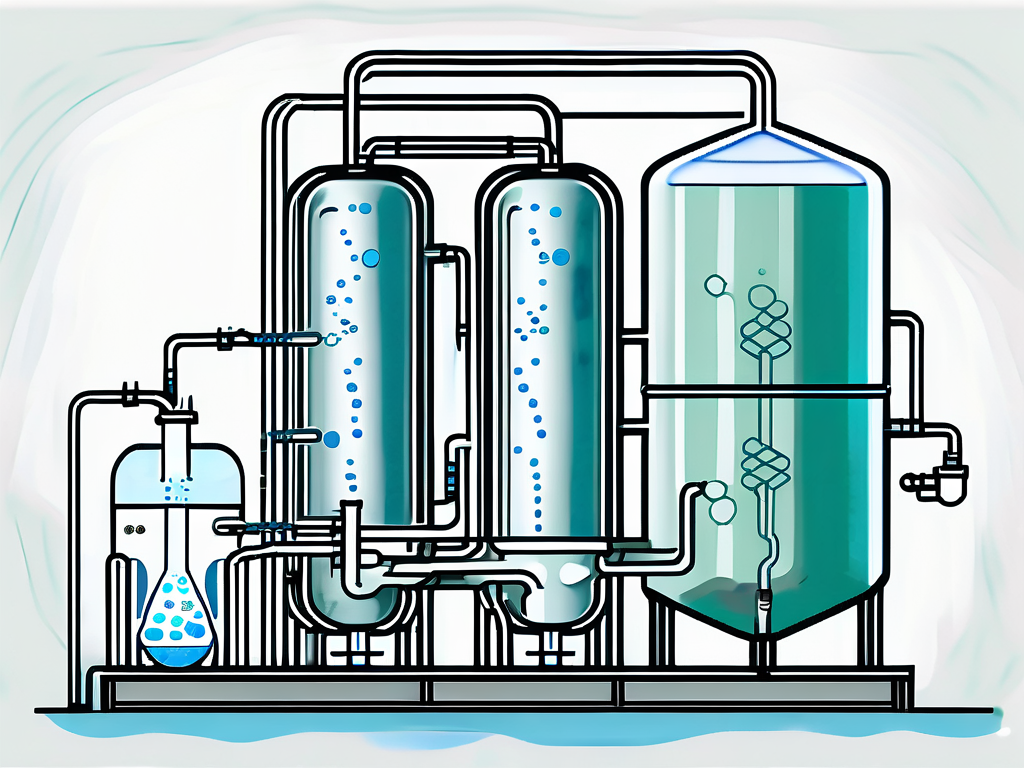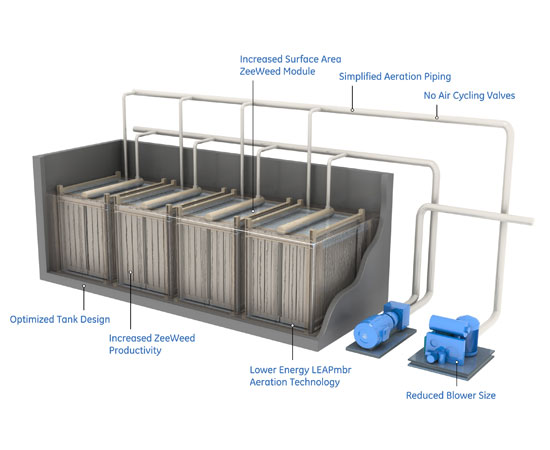The Economic Benefits of Installing a Membrane Bioreactor for Your Facility
The Economic Benefits of Installing a Membrane Bioreactor for Your Facility
Blog Article
Membrane Bioreactors Discussed: Reliable Solutions for Clean Water
Membrane layer bioreactors (MBRs) have emerged as a sophisticated solution for addressing the pushing obstacles of wastewater treatment - Membrane Bioreactor. By integrating organic procedures with sophisticated membrane purification, MBRs not just improve the high quality of treated water yet additionally decrease the spatial demands of treatment facilities.

What Are Membrane Layer Bioreactors?
Membrane layer bioreactors (MBRs) are sophisticated wastewater therapy systems that incorporate biological degradation procedures with membrane filtration technology. This assimilation allows for the efficient elimination of contaminants from water, making MBRs a preferred option in numerous applications, including metropolitan wastewater therapy and commercial effluent management.

One of the critical benefits of MBRs is their ability to generate top notch effluent, typically suitable for reuse in watering or commercial processes. Additionally, MBRs need a smaller footprint contrasted to traditional therapy systems, making them optimal for urban setups where room may be restricted.
In addition, MBRs can successfully handle differing influent lots and are less at risk to the effects of hazardous shocks. These characteristics add to their expanding popularity as a sustainable remedy for resolving the raising demand for tidy water while decreasing ecological influences.
Just How Membrane Layer Bioreactors Work
While the procedure of membrane layer bioreactors (MBRs) might seem complicated, it basically revolves around the synergy between organic procedures and membrane layer filtration. MBRs integrate a biological therapy procedure, typically triggered sludge, with a membrane layer splitting up device to treat wastewater efficiently.
In an MBR system, wastewater is very first introduced into a bioreactor where bacteria deteriorate raw material and various other contaminants. The organic task decreases the concentration of contaminants while promoting the growth of biomass. Following this organic treatment, the mixed liquor undergoes membrane layer filtering, which can be microfiltration or ultrafiltration, relying on the desired effluent quality.
The membrane layers act as a physical obstacle, enabling water and little solutes to pass while keeping suspended solids and bigger molecules. This enables the system to keep a high concentration of biomass within the activator, improving the therapy performance.
Additionally, the continual splitting up of treated water from the biomass helps with a portable style and minimizes the impact of the therapy facility. Generally, the combination of organic destruction and membrane filtering in MBRs causes efficient and dependable wastewater therapy, making certain premium effluent ideal for various applications.
Advantages of MBR Innovation
Among the key advantages of membrane bioreactor (MBR) innovation is its capacity to produce top notch effluent with a considerably minimized impact contrasted to standard wastewater therapy methods. MBR systems efficiently integrate organic therapy and membrane layer purification, causing premium removal of contaminants, including put on hold solids, pathogens, and natural issue. This capacity brings about effluent that often meets or exceeds strict regulatory requirements for reuse and discharge.
Additionally, MBR technology enables higher biomass focus, which boosts the therapy effectiveness and decreases the required reactor quantity. This portable style is especially helpful in metropolitan locations where area is limited. The operational versatility of MBR systems additionally means they can adjust to differing influent qualities and circulation rates, making them suitable for a variety of applications.
In addition, the lowered sludge production associated with MBR procedures contributes to lower functional and maintenance prices. The membrane layers function as a physical obstacle, lessening the risk of obstructing and allowing Visit Your URL longer operational durations between cleansing. In general, the benefits of MBR technology make it an eye-catching option for sustainable wastewater therapy, dealing with both ecological issues and the demand for effective source administration.
Applications of Membrane Layer Bioreactors
With their flexibility and performance, membrane bioreactors (MBRs) discover applications throughout different fields, including local wastewater therapy, industrial procedures, and also water improvement. In local setups, MBRs offer a small service for dealing with wastewater, effectively eliminating impurities while at the same time creating top quality effluent that fulfills stringent regulative requirements. This makes them specifically suitable for areas with restricted room.
In commercial applications, MBR technology is used for useful content treating process water, especially in sectors such as food and drink, drugs, and petrochemicals. These industries take advantage of MBRs' capability to take care of high natural loads and their efficiency in recovering useful sources from wastewater, such as nutrients and water.
Moreover, MBRs play a critical function in water reclamation initiatives, allowing the reuse of treated wastewater for watering, industrial procedures, and even as drinkable water after more treatment (Membrane Bioreactor). Their efficiency in removing toxins and virus makes them a reputable option for making sure water high quality in numerous reuse applications
Future of Water Therapy Solutions
The future of water therapy options is poised for transformative developments driven by technical advancement linked here and boosting environmental recognition. As international water deficiency comes to be a pressing issue, brand-new methods, including membrane layer bioreactor (MBR) systems, are readied to play a critical role in boosting the effectiveness and sustainability of water therapy procedures.
Emerging innovations such as synthetic knowledge and maker knowing are anticipated to enhance therapy operations, allowing for real-time tracking and anticipating upkeep. This will certainly enhance the total dependability and effectiveness of water therapy facilities. Improvements in membrane layer materials, such as graphene and nanofiltration, guarantee to raise permeation rates and minimize fouling, leading to reduced energy usage and functional prices.
Additionally, the integration of renewable resource sources into water therapy plants will certainly add to greener techniques. The round economic situation version will certainly likewise acquire traction, motivating the recovery of valuable sources from wastewater, such as nutrients and energy.
Conclusion

Membrane bioreactors (MBRs) have emerged as a sophisticated service for attending to the pushing difficulties of wastewater therapy. By incorporating organic processes with sophisticated membrane filtering, MBRs not only boost the top quality of cured water yet additionally reduce the spatial requirements of therapy centers.One of the crucial benefits of membrane bioreactor (MBR) technology is its ability to produce premium effluent with a dramatically reduced impact contrasted to traditional wastewater treatment techniques.With their flexibility and efficiency, membrane bioreactors (MBRs) find applications throughout numerous markets, including community wastewater therapy, commercial processes, and even water recovery.In final thought, membrane bioreactors stand for a considerable development in wastewater treatment modern technology, incorporating biological procedures with effective membrane layer filtering to produce top quality effluent.
Report this page